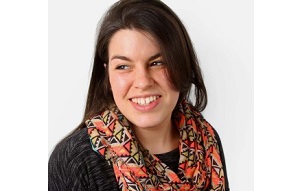There’s a huge mismatch in terms of how women are portrayed in advertising and the current social reality, and it could be costing brands dearly, according to new research. The good news is that this presents a great commercial opportunity, says Elisa Birtwistle, Director and Head of Human and Cultural Foresight at The Futures Company.
If brands want their advertising and marketing communications to resonate with women, then they have to understand that using simplistic one-dimensional stereotypes in their messaging no longer works.
Arguably, the statistic prompting the biggest reaction at this year’s Cannes Lions Festival was revealed by Unilever’s Keith Weed. During his presentation on why and how the FMCG giant is radically changing its female-focused advertising strategy through #Unstereotype, he announced that 40% of women do not identify with the images of them portrayed by most ads, while just 3% of all ads feature women in leadership roles.
As Weed disclosed more and more of the findings, a vivid picture emerged of the huge gap between how female identity is evolving and the version presented by advertising. Credit was widely given to Unilever for committing to develop more culturally relevant and resonant work to combat gender stereotyping and more accurately reflect society.
However, Weed was also keen to point out that the change in tack wasn’t just driven by altruism, but was firmly underpinned by a commercial imperative. The research not only uncovered how female identity is evolving at break-neck speed, but also highlighted the opportunity for brands to do something about it and reap the reward.
Based on work Unilever carried out with The Futures Company to identify the evolving nature of female identity, Unilever have galvanized behind their goal to create more communications which show a progressive vision of female identity, by challenging themselves on three key dimensions of how women are represented: through their role, personality and appearance.
The work conducted by The Futures Company revealed that ads that fit the progressive category were shown to deliver higher levels of engagement, interest and excitement, indexing well in terms of standing out and making an impact. In other words, that making communications which show a more progressive vision of female identity makes sound business sense.
To continue to resonate with women, brands need to also take into account that female identity is constantly changing and keep up with or even pre-empt this evolution. What’s clear from the research is that the advertising and marketing industry has got a lot of catching up to do to simply project a realistic, contemporary picture of female identity.
The good news is that those brands brave enough to move their strategy forward have a great opportunity for growth, disruption and creativity. To do so, brands will need to get a deeper understanding of how values and culture are changing, so that they can not just reflect an accurate picture of the status quo (where female identity is today) but challenge and shape new, more progressive visions of where female identity could go in future.
By Elisa Birtwistle
Director and Head of Human and Cultural Foresight
The Futures Company
